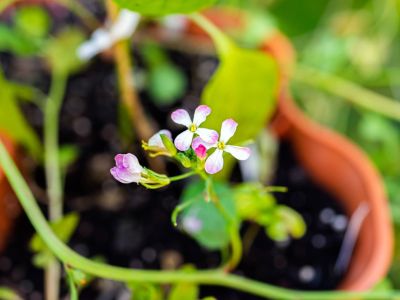Why Do Radishes Bolt?
Radishes bolt for the same reason anything else does– as a result of high temperatures and long days. Radishes are considered cool season crops and are best grown in early spring or fall when temperatures range between a comfortable 50 to 65 degrees F. (10-16 C.) and day length is short to moderate. They also like plenty of moisture while growing. If radishes are planted too late in spring or too early for fall, the warmer temps and longer days of summer will inevitably lead to bolting. While you can cut a radish flower, radishes that have bolted will have a more bitter, undesirable flavor and tend to be woodier in nature.
Preventing Radish Blooms, or Bolting
There are ways you can minimize bolting in radish plants. Since they prefer cool, moist growing conditions, be sure to plant them when temperatures are around 50 to 65 degrees F. (10-16 C.). Anything warmer will cause them to mature faster and bolt. Those grown in cooler temps will also have a milder flavor. Spring planted radishes should also be harvested early—before the heat and longer days of summer begin to set in. Radishes are usually mature in 21 to 30 days, or three to four weeks after planting. Checking on them frequently is a good idea since they tend to grow rather quickly. Generally, red radishes are ready for harvesting just prior to reaching about an inch (2.5 cm.) in diameter. White varieties are best harvested at less than ¾ inches (2 cm.) in diameter. Some of the oriental types are naturally prone to bolting and this may occur regardless of your efforts. If your radishes are already planted later than they should be, you can minimize the effects of bolting by keeping the radish plants irrigated and adding mulch to help retain this moisture and keep the plants cooler.
